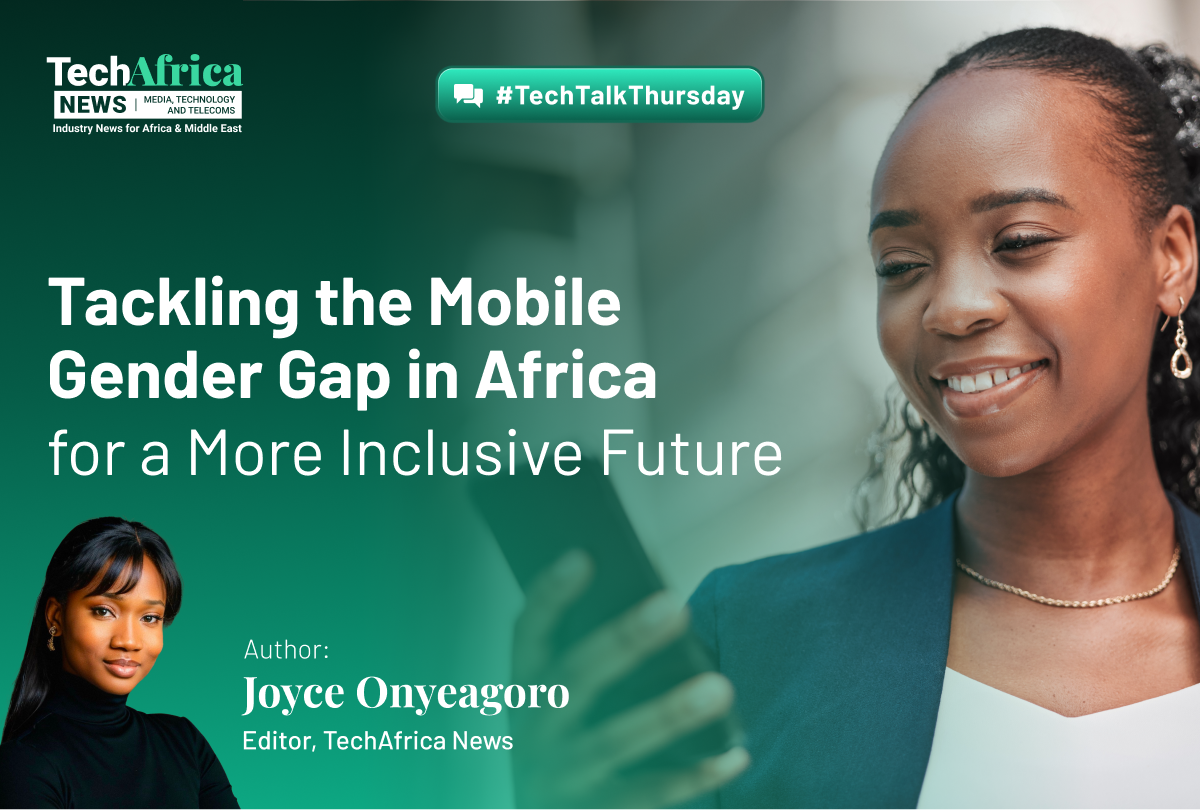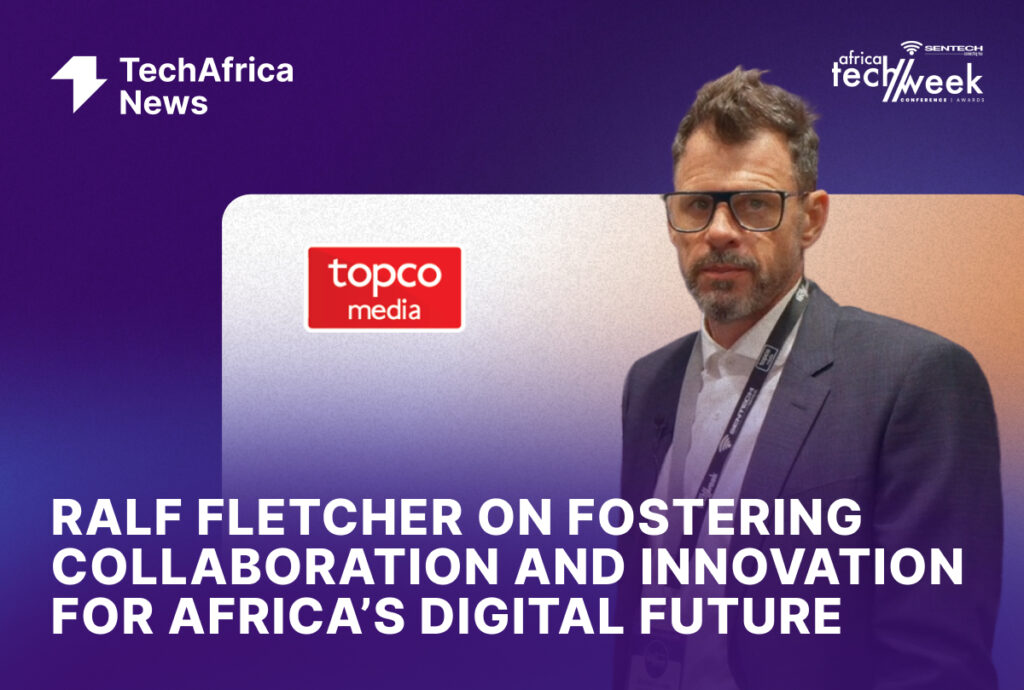Tackling the Mobile Gender Gap in Africa for a More Inclusive Future

Mobile phones are reshaping Sub-Saharan Africa in unprecedented ways. These devices have evolved far beyond mere communication tools, becoming powerful drivers that propel social and economic development. In this edition of TechTalk Thursday we shall see how the access to these transformative tools is not evenly distributed and the benefits of this digital revolution are not shared equally among all societal groups, particularly between genders.
The term “digital gender divide” or “mobile gender gap” highlights the disparities in access, usage, and ownership of digital tools between men and women. This gap reflects the unequal distribution of resources and capabilities needed to effectively utilize information and communication technologies (ICTs) across different countries, regions, sectors, and socio-economic groups.
In many parts of Africa, a significant number of women remain disconnected from the digital world—whether by choice or due to various barriers. Addressing this mobile gender gap is crucial for ensuring that the digital transformation is inclusive and beneficial for all.
How Wide is the Mobile Gender Gap in Africa Today?
Women’s rate of mobile Internet adoption has seen a slight increase over the past year in both Sub-Saharan Africa and globally, according to the GSMA’s annual Mobile Gender Gap Report 2024 . Notably, the gender gap in mobile Internet adoption across these countries has narrowed for the first time since 2020, with women adopting mobile Internet at a faster rate than men. Globally, one of the most promising findings of the report is the reduction of the mobile Internet gender gap from 19% in 2022 to 15% in 2023, effectively returning to 2020 levels.
Sub-Saharan Africa has experienced a more modest improvement, with the gender gap narrowing from 36% to 32% over the same period. The proportion of women in the region using mobile Internet has grown from 24% in 2017 to 36% in 2023. However, despite these gains, there are still 200 million women in Sub-Saharan Africa who do not use mobile Internet. This slight narrowing of the gender gap marks the first improvement in five years for the region.
During the launch of the GSMA Mobile Gender Gap Report, Claire Sibthorpe, head of digital inclusion at the GSMA, emphasized on the latest findings saying;
“The reduction in the mobile Internet gender gap is promising but sustaining momentum is fragile”
Claire Sibthorpe, Head of digital inclusion, GSMA
This means, there is still a lot that needs to be done.
So Where Does this Gap Come From?
According to the latest findings from the GSMA Mobile Gender Gap Report 2024, the underlying gender gap in mobile ownership across low- and middle-income countries, including those in Africa, has seen minimal change since 2017. Women in these countries are still 8% less likely than men to own a mobile phone. The primary barriers to mobile ownership for both women and men continue to be affordability, particularly of handsets, literacy, and digital skills.
While awareness of mobile internet is high across most survey countries, with over 80% of people acknowledging its existence, there remains a disparity in awareness between men and women in some regions, with women being around 20% less likely than men to be aware of mobile internet. However, mere awareness only sometimes translates into adoption, as many people may not fully comprehend the various ways mobile internet can be utilized.
The top barriers to adoption for those already aware of mobile internet are affordability, primarily of handsets, and literacy and digital skills.
Affordability: A Barrier to Access
Affordability, particularly of handsets, remains one of the top barriers to mobile internet adoption and use in all survey countries, with data affordability also emerging as a significant concern in several regions. According to the GSMA Mobile Gender Gap Report 2024, women are 8% less likely than men to own a mobile phone in low to middle-income countries.
The cost of handsets is often cited as a primary obstacle, with the price of entry-level devices representing a substantial portion of women’s monthly income, compared to that of men. GSMA analysis reveals that in 2022, the cost of an entry-level handset consumed 24% of women’s monthly income in LMICs, compared to just 13% for men. This disparity in affordability exacerbates the digital gender gap, making it harder for women to access essential mobile services.
Literacy and Digital Skills
Another significant barrier to mobile ownership and usage among women in Africa is the lack of literacy and digital skills, although to a lesser extent than before. Many women face challenges in accessing and effectively utilizing mobile technology due to limited educational opportunities and digital literacy programs. Reading and writing difficulties, compounded by inadequate digital skills training, further hinder women’s ability to navigate mobile devices and engage with digital content. In countries like Senegal, where basic literacy rates are lower, these barriers are particularly pronounced, with a significant proportion of women reporting literacy and skills barriers as impediments to mobile internet adoption.
Safety and Security Concerns
Safety and security concerns also deter women from fully embracing mobile internet services. Fears related to information security, fraud, scams, and exposure to harmful content are prevalent among both male and female mobile internet users. Despite the potential benefits of online connectivity, these concerns can erode trust and confidence in mobile technology, especially among women who may already face heightened vulnerabilities online. Addressing these safety and security issues is crucial to fostering a secure digital environment that encourages women’s participation in mobile internet usage.
Relevance
The perception of irrelevance presents a significant barrier to the adoption and usage of mobile internet, particularly among individuals who have not yet embraced it. Many people, especially in low- and middle-income countries, perceive the Internet as irrelevant to their daily lives. This perception is often fueled by a lack of localized content in native languages, which reduces the appeal and utility of mobile internet services.
In various survey countries, respondents have highlighted the absence of relevant content in local languages as a contributing factor to their reluctance to engage with mobile internet platforms. While this barrier is reported to a lesser extent compared to other challenges, its impact is nonetheless significant in shaping attitudes towards mobile internet usage.
Connectivity Experience
Connectivity experience, including issues related to network coverage and reliability, also poses challenges for women in accessing mobile internet services. In countries where connectivity infrastructure may be less developed, women are more likely to encounter connectivity barriers that impede their ability to use mobile internet effectively. Addressing these infrastructure gaps and improving connectivity in underserved areas are essential steps toward ensuring equitable access to mobile technology for women across Africa.
Why Does Closing the Mobile Gender Gap Matter for Africa?
Closing the mobile gender gap in Sub-Saharan Africa holds immense significance for individuals, societies, and economies. Connectivity is pivotal for achieving the UN Sustainable Development Goals (SDGs) related to health, education, and financial inclusion. According to GSMA, closing this gap over eight years could inject $230 billion into the mobile industry, while failing to address it may lead to LMICs losing over USD 500 billion in GDP in five years.
Ensuring women’s access to mobile technology is crucial in today’s digital era, enabling resilience in the face of crises and providing access to life-enhancing opportunities. Mobile connectivity empowers women, fosters autonomy, and enhances safety, contributing to their economic, social, and political empowerment. Closing the mobile gender gap aligns with both the African Union’s Agenda 2063 and the UN SDGs, fostering a more inclusive and prosperous future for all.
Working Towards Inclusive Digital Transformation
While progress has been made in closing the mobile gender gap in Sub-Saharan Africa, significant disparities persist. As with various other challenges facing mobile technology adoption in Africa, the GSMA report emphasizes the need for continued and coordinated efforts to bridge this gap . Key stakeholders, including mobile network operators, policymakers, regulators, internet communities, and development organizations, must work together to create inclusive digital ecosystems.
The report highlights several recommendations, such as improving the quality and availability of gender-disaggregated data and understanding the specific needs and barriers women face in mobile ownership and use. Addressing these issues requires focused gendered interventions and policies. Partnerships and collaborations among mobile operators, governments, the development community, and other stakeholders are essential for implementing these strategies effectively.
We have to make sure that we don’t lose focus because this gap is still significant. We need to target action from a range of stakeholders to solve this challenge. For many years now, we have worked with operators as part of the GSMA connected women initiative to drive digital and financial inclusion for women with some impressive results. Today, over 50 operators have made formal commitments to reach more women with mobile internet and mobile money services.
Mats Granryd, Director General, GSMA
Moving from commitment to action is crucial. The mobile internet gender gap remains substantial and will not close on its own. Targeted action and investment are needed to accelerate progress, benefiting women, their communities, and broader economies. Addressing the mobile gender gap is not just about achieving digital equality; it is about preventing the exacerbation of existing gender inequalities. Only through concerted action and collaboration can we ensure a truly inclusive digital transformation.






